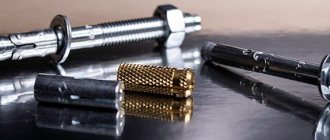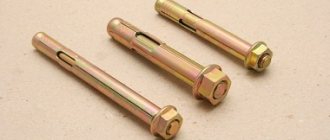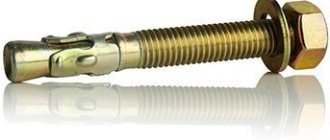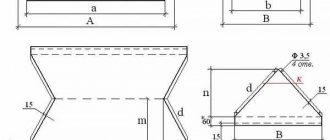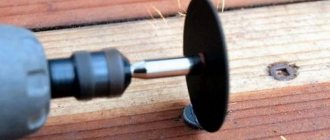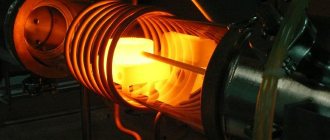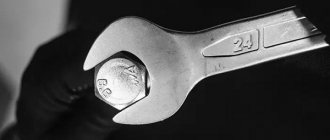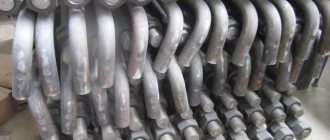Fastenings using various types of anchors are characterized by specialists as connections that can provide reliable retention of heavy loads. After deepening into a pre-prepared hole, the worker, depending on the tasks at hand, chooses the best way to fasten the anchor bolt. After the assessment, when the selected surface areas are suitable for organizing a point that provides fastening of anchor devices, the point is arranged with subsequent fastening of the equipment.
The use of anchor supports is necessary when using a rope movement system when carrying out installation and construction work at height, fixing slings for positioning and holding the worker without slipping and jerking. The strength of the connection allows the use of anchor points and lines to ensure the installation of collective and individual protective equipment, making it possible to safely carry out installation work on products and maintenance of devices located at height.
Anchor fastening types and features of anchors application tightening technique
Using a kit for fastening to anchor supports, it is possible to install the coupling on power transmission line supports and wind the free length of the optical cable onto the frame. This type of connection is used to ensure the safety of work performed at height according to the permit. To carry out such activities, a permit is required, issued by a labor protection specialist and endorsed by officials from among the managers, and the work itself is carried out by a group of workers under the guidance of foremen and supervisors.
The most widely used are anchor bolts that have a spacer operating principle based on the expansion of the rear section of the sleeve when a cone-shaped sleeve is screwed into it. Among the well-known types of anchors, experts call driven, expanding, chemical, expansion and wedge structures. Each of them ensures reliable retention of the fastening part due to the use of the friction force between the contact surfaces of the bolt and the installation area, the thrust force, which ensures compensation of the effective stress by the resistance of the metal of the product. Increasing the diameter of the spacer sleeve when screwing a bolt into it ensures a reliable connection due to the combined action of thrust and friction forces.
Experts emphasize the importance of choosing the right type of anchor, based on studying the manufacturer’s documents that determine the specifics of each type of product. since the reliability of the system largely depends on the building material used at the point where the bolt is attached. Proper execution of fastening is necessary to prevent damage during operation of the parts that make up the connection and to ensure comfortable work in the support. Such a connection will ensure safety when working at heights, fastening heavy static (horizontal bars) and dynamic (diamond drilling rigs) structures.
Types of anchor fastening
As noted above, the correct choice of location for the anchor point plays an important role in ensuring worker safety. It is possible to assess when the selected areas are suitable for installing anchorage points by the load they can withstand; each of them must withstand a weight of at least 22 kN. To ensure reliable connection, the anchor point used to fasten the equipment can be connected to the load-bearing elements of the building, pre-assembled metal structures. After drilling the hole and installing the anchor, kits are used to secure the safety structures to the anchor supports. The standard kit used for anchor type fastening includes:
- 3 anchors;
- threaded rod;
- punch for making a recess;
- nuts that require the use of an open-end wrench.
Additionally, the kit used for fastening to anchor supports may include a washer and a punch to ensure wedging when using an anchor of the appropriate design. In addition, a kit for anchoring may include a larger number of bolts, but in this case the cost of one set increases. The kit that provides fastening of security systems to anchor supports includes an anchor clamp, a small steel cable, wedges and a bracket that allows for the installation of up to 3 clamps.
Structurally, an anchor bolt with a nut is a stud with a thread on one side, with which the nut is screwed on, and the other end is made in the form of a spacer cone. When tightening the nut, the spacer-type sleeve, on the side surfaces of which there are slots, expands, forming “petals” that ensure a reliable connection with the support surface.
Note! Before attaching anchor bolts, the concrete surface is drilled, and the drill, with the exception of cases of impact-type bolts, corresponds to the diameter of the anchor used.
Anchors used to fasten parts of geogrids are mounted around the perimeter of each of the mounted modules. The anchor for fastening the geogrid is installed according to a pre-approved diagram, so that the tension lines provided resemble a rectangle.
Manufacturers place high demands on the quality of products, testing the elements for strength necessary to ensure safety, preventing their damage, breakage or failure. When using rope access systems, it is prohibited to use only one rope when ascending or descending planes, as well as when performing installation work. To ensure the safe operation of flexible anchor lines, the correct answer when asked by an instructor about the specifics of use is the need to use limiters at the end to prevent the descent from passing the end of the rope. Permissible impacts are determined by the effective load in the operating structures. In turn, workers receive a work permit by giving the correct answers after preliminary instruction.
Impact method
The use of this method involves the use of drive-in type anchors and is characterized by ease of installation and reliability of the resulting connection. However, the method has limitations regarding the possibility of using it exclusively when working with materials with high strength values, for example, concrete, solid brick or stone.
- Before attaching a drive-in anchor bolt, it is necessary to drill a hole whose diameter corresponds to the parameters of the bolt used.
- After this, it is necessary to clean the prepared hole from debris and dust.
- The next step is to install a hammer-type bolt into the hole.
- Using a hammer and other tools, such as a bit or a special wedging structure, the striker is inserted into the conical hole. At the same time, the sliding part of the bolt opens, providing support against the walls of the prepared hole.
- At the last stage, the parts are fastened using a pin or bolt.
Technical features
When choosing a mount, you should pay attention to its length and diameter.
| Marking | Anchor and drill diameter, mm | Anchor length, mm | Thickness of the mounted part, mm | Hole depth, mm | Min. anchorage depth, mm | Tightening torque, Nm | Loads (compressed zone of concrete C20/25) | |
| Breakout, kN | Shear, kN | |||||||
| 6x40 | 6 | 40 | 2 | 35 | 25 | 4 | 1,0 | 2,0 |
| 6/15x65 | 6 | 65 | 15 | 45 | 35 | 7 | 1,7 | 2,5 |
| 6/50x100 | 6 | 100 | 50 | 45 | 35 | 7 | 1,7 | 2,5 |
| 8x50 | 8 | 52 | 2 | 45 | 30 | 15 | 3,3 | 3,4 |
| 8/10x72 | 8 | 72 | 10 | 60 | 45 | 15 | 3,6 | 5,7 |
| 8/30x92 | 8 | 92 | 30 | 60 | 45 | 15 | 3,6 | 5,7 |
| 8/50x112 | 8 | 112 | 50 | 60 | 45 | 15 | 3,6 | 5,7 |
| 8/85x147 | 8 | 147 | 85 | 60 | 45 | 15 | 3,6 | 5,7 |
| 10x60 | 10 | 62 | 3 | 50 | 30 | 30 | 3,5 | 3,8 |
| 10/10x92 | 10 | 92 | 10 | 75 | 60 | 35 | 6,3 | 10,3 |
| 10/20x102 | 10 | 102 | 20 | 75 | 60 | 35 | 6,3 | 10,3 |
| 10/30x112 | 10 | 112 | 30 | 75 | 60 | 35 | 6,3 | 10,3 |
| 10/50x132 | 10 | 132 | 50 | 75 | 60 | 35 | 6,3 | 10,3 |
| 10/80x162 | 10 | 162 | 80 | 75 | 60 | 35 | 6,3 | 10,3 |
| 12x85 | 12 | 85 | 3 | 75 | 55 | 50 | 6,5 | 9,6 |
| 12/5x103 | 12 | 103 | 5 | 90 | 70 | 50 | 7,9 | 13,1 |
| 12/20x118 | 12 | 118 | 20 | 90 | 70 | 50 | 7,9 | 13,1 |
| 12/30x128 | 12 | 128 | 30 | 90 | 70 | 50 | 7,9 | 13,1 |
| 12/50x148 | 12 | 148 | 50 | 90 | 70 | 50 | 7,9 | 13,1 |
| 12/65x163 | 12 | 163 | 65 | 90 | 70 | 50 | 7,9 | 13,1 |
| 12/80x178 | 12 | 178 | 80 | 90 | 70 | 50 | 7,9 | 13,1 |
| 12/155x253 | 12 | 253 | 155 | 90 | 70 | 50 | 6,4 | 6,4 |
| 16x90 | 16 | 90 | 3 | 80 | 60 | 100 | 9,9 | 21,8 |
| 16/5x123 | 16 | 123 | 5 | 110 | 85 | 120 | 16,7 | 25,1 |
| 16/20x138 | 16 | 138 | 20 | 110 | 85 | 120 | 16,7 | 25,1 |
| 16/50/168 | 16 | 168 | 50 | 110 | 85 | 120 | 16,7 | 25,1 |
| 16/60x178 | 16 | 178 | 60 | 110 | 85 | 120 | 16,7 | 25,1 |
| 16/95x213 | 16 | 213 | 95 | 110 | 85 | 120 | 10,0 | 10,0 |
| 20/20x170 | 20 | 170 | 20 | 135 | 110 | 240 | 19,8 | 27,7 |
| 20/70x220 | 20 | 220 | 70 | 135 | 110 | 240 | 19,8 | 27,7 |
| 20/130x280 | 20 | 280 | 130 | 135 | 110 | 240 | 19,8 | 27,7 |
The diameter determines the maximum permitted weight that can be hung on the anchor. The heavier the load that needs to be secured, the wider the diameter of the fastener should be. For light loads, a model with a diameter of 6 mm is suitable. For large loads, it is worth using a model with a diameter of 16 mm.
Depending on the thickness of the material being fixed, the length of the anchor varies. To attach a thin plate, you should choose an anchor from 30 mm. For thick sheets, it is better to take fasteners over 100 mm.
How to install an anchor bolt
Before attaching an anchor bolt with a nut, it is necessary to drill a hole, the diameter of which must be equal to the thread parameter. After cleaning the hole from dust, the anchor is installed into it, with the conical part directed inside the hole, the length of which slightly exceeds the minimum depth for anchoring. Using a hammer, the anchor is inserted until the required installation depth is reached, after which the nut is tightened.
Purpose of fasteners.
Bolts, sometimes called foundation anchors, are intended for fastening the lower crown of log structures to the building support, as well as connecting with other materials of external walls or installing various machines and mechanisms in industrial enterprises. In addition, to strengthen the base of the house, U-shaped or H-shaped steel profile parts, called channels and I-beams, are often attached to it.
Installation of anchor bolts in the foundation.
Purpose of foundation fasteners.
It is impossible to attach building blocks or beams to a smooth strip reinforced concrete or slab foundation without fear of all sorts of deformations and displacement of the structure. To solve this problem, long rods of one shape or another, called anchor bolts, are used.
Chemical anchor, fastening with glue
Fastenings based on filling the inside of a metal rod embedded in the wall are used to provide strong connections in stone, brick, sandstone, shell rock, limestone, and cellular concrete. Such connections involve the use of chemical anchors, for example the popular all-season type moment fastener CF900. A metal insert, which is a reinforcement rod, a threaded stud or a sleeve with a thread on the inner surface, goes deep into a prepared hole, the diameter of which exceeds the anchor parameter by 2 mm. After this, a capsule with glue based on polyester, polyurethane or acrylic resinous substances, a hardener and filler in the form of sand is inserted into the sleeve. Then the glass cylinder is destroyed and a metal rod is inserted into it and the binder is waited for setting.
Calculation of anchors
Performing a pull-out test on connections is often performed on site. The permissible load will depend on the base material, for example:
- When installing massive structures at height, the required tensile strength should be about 700 kg, which is why experts recommend using chemical types of anchors for such fastenings.
- When using concrete or brick as a base, the average load is about 350 kg, this value is sufficient for fastening medium and heavy structures.
- When using foamed concrete, the load it can withstand will be about 250 kg.
In addition to calculating the load-bearing capacity of the elements used, the correct tightening torque of threaded connections must be ensured. If the tightening is insufficient, there may be no frictional force in the connection; if the recommended values are exceeded, there is a possibility of material destruction due to excess pressure on the base.
Did you manage to solve your problem using the recommendations from the article?
Yes!
46.39%
No. More answers required. I'll ask in the comments now.
38.56%
Partially. There are still questions. I'll write in the comments now.
15.05%
Voted: 804
Application area
Such an effective fastening element as a wedge anchor is equally successfully used both in capital construction and when performing home repair work. The wedge anchor is applicable in situations where it is necessary to securely fasten objects of large size and significant weight to the surface of walls, floors and ceilings made of durable materials (concrete, brick, etc.).
The high reliability of wedge anchors is ensured not only by their design, but also by the material of their manufacture, which is galvanized steel, which has exceptional strength.
Considering the fact that such anchors are often used for installation of elevator shafts, cable routes, and highly loaded elements of staircase structures, very high demands are placed on their reliability and durability. It is also extremely important when using these fasteners to strictly follow the rules for their installation.
Among the varieties of such fastening elements, the ceiling wedge anchor occupies a special place. It is used to securely fix heavy and large chandeliers to the ceiling surface.
The ceiling wedge anchor consists of a steel rod, a stop cap and a wedge-shaped thrust

